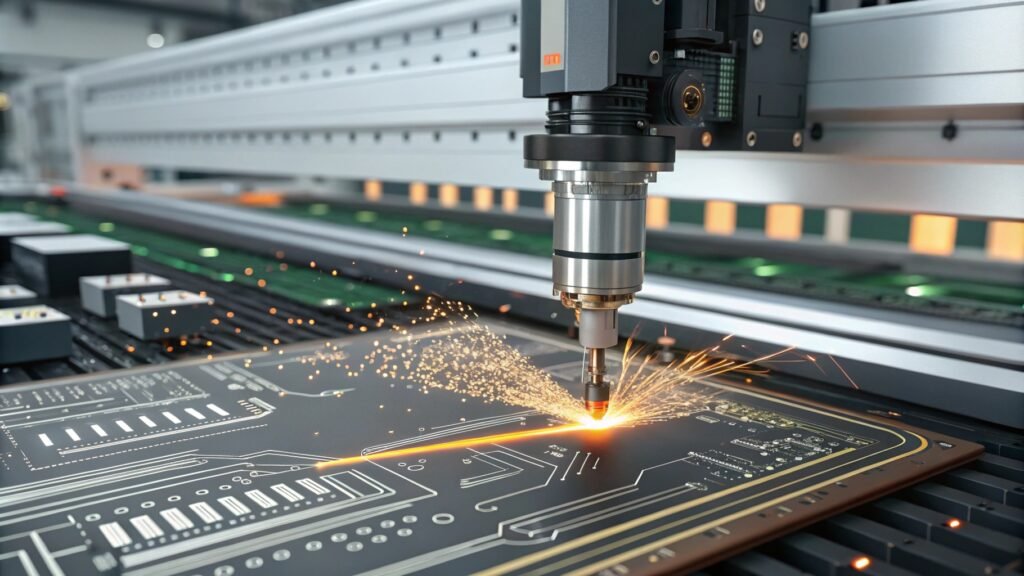
In the fast-paced world of electronics manufacturing, delays can be costly.
Solder paste jetting enhances production by offering speed, precision, and flexibility in solder application.
I recall when traditional methods couldn't keep up with our growing demands.
[Table of Contents]
- How Does Solder Paste Jetting Improve Production Efficiency in Electronics Manufacturing?
- What Industries Benefit the Most from Adopting Solder Paste Jetting Technology?
- How Does Solder Paste Jetting Compare to Traditional Stencil Printing Methods?
- What Are the Technical Requirements for Implementing Solder Paste Jetting in Existing Production Lines?
- Conclusion
How Does Solder Paste Jetting Improve Production Efficiency in Electronics Manufacturing?
Efficiency is crucial in electronics manufacturing.
Solder paste jetting speeds up production by reducing setup times and allowing quick adjustments.
When I introduced this technology, our output increased significantly.
Streamlining the Process
Traditional stencil printing1requires time-consuming setups.
- No Stencils Needed: Eliminates the need for stencil creation and cleaning.
- Quick Changeovers: Easily switch between different products without downtime.
Enhancing Precision
Accuracy is vital for high-quality products.
- Fine Pitch Capability: Handles small components with ease.
- Consistent Deposits: Ensures uniform solder application.
Reducing Waste
Less waste means lower costs.
- Exact Amounts: Applies the precise amount of solder paste needed.
- Minimal Cleanup: Reduces the need for cleaning excess paste.
What Industries Benefit the Most from Adopting Solder Paste Jetting Technology?
Some industries see greater advantages.
Industries requiring precision and flexibility benefit most from solder paste jetting.
I've worked with several sectors where this technology made a difference.
Medical Devices
Quality and precision are non-negotiable.
- Complex Designs: Handles intricate circuits in medical equipment.
- Regulatory Compliance: Meets strict industry standards.
Aerospace and Defense
Reliability is key.
- High-Reliability Components: Ensures solder joints meet stringent requirements.
- Prototype Development: Speeds up the creation of new technologies.
Consumer Electronics
Keeps up with rapid market changes.
- Fast Turnaround: Quickly adapts to new product designs.
- Mass Customization: Allows for personalized products.
How Does Solder Paste Jetting Compare to Traditional Stencil Printing Methods?
Understanding the differences helps in decision-making.
Solder paste jetting offers more flexibility but may have higher initial costs than stencil printing.
Here's how they stack up.
Comparison Table
| Feature | Solder Paste Jetting | Stencil Printing |
|---|---|---|
| Setup Time | Short | Long |
| Flexibility | High | Low |
| Precision | High | Moderate |
| Material Waste | Low | High |
| Initial Investment | Higher | Lower |
Advantages and Disadvantages
Solder Paste Jetting
- Advantages: Flexibility, precision, reduced waste.
- Disadvantages: Higher upfront costs, requires training.
Stencil Printing
- Advantages: Lower initial cost, suitable for high-volume production.
- Disadvantages: Less flexible, more waste, longer setup times.
What Are the Technical Requirements for Implementing Solder Paste Jetting in Existing Production Lines?
Adoption requires planning.
Implementing solder paste jetting needs compatible equipment and staff training.
I faced these challenges when upgrading my facility.
Equipment Integration
- Space Requirements: Ensure there's room for new machinery.
- Compatibility: Check that existing systems can interface with the jetting equipment.
Software Compatibility
- Data Formats: Supports Gerber files for seamless integration.
- Automation Systems: Must work with current production software.
Staff Training
- Operator Training: Teach staff how to use and maintain the new equipment.
- Maintenance Procedures: Establish routines for upkeep to prevent downtime.
Conclusion
Solder paste jetting offers significant advantages in efficiency and precision, making it a valuable technology for modern manufacturing.
-
123 ↩
1.png)